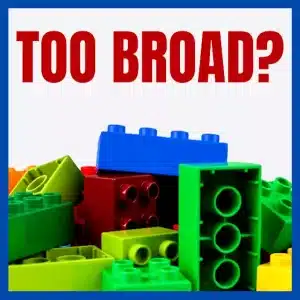Product Creation Steps
How do you create an information product? As with all success stories there are usually a number of essential steps that you need to take. These are the eight steps that we work through as our Product Creation Process in our two-day Profitable Product hands-on workshop.
Listen to our podcast version of this blog post.
1 Vision
I’m a firm believer in Simon Sinek’s Start With Why for any project that you begin. It’s super important for product creation because it’s going to take you a considerable amount of time and energy to execute. And, naturally along the way a host of glowing opportunities will pop up to try to distract and disrupt you. Your ‘why’ also becomes the context for your decision making along the way.
Action: Define Your Vision for your product. What do you want to achieve? And, what’s going to stop you along the way?
2 Inventory
Now, we want to translate your vision into something specific. And, the first step is to look at your current starting point. You won’t be starting from zero. Given you’re wanting to create an information product we’ll presume you’re already an expert in something. We need to get really clear on what this expertise is. And, we want to look at what existing intellectual property and other resources you already have at your disposal. There’s a good chance you already have a lot of material that could be re-used, re-purposed and enhanced to assist you with your product creation. This will accelerate your results.
Action: Define your business expertise. Then make an extensive list of all the resources you already have that demonstrate this expertise. This is your inventory and starting point for your product creation.
3 Opportunity
Next we want to turn what you’ve got into something that solves a problem for your intended audience. The fundamental question you need to ask to turn your ideas into profitable products is: What is the best form for my idea? Should I write a book? Create an online course? Design a board game?
There are lots of choices and it’s crucial to be aware of the different results that different products can produce. For example, writing a book will typically give your reputation the biggest boost. However, the trade-off is that few people will read it and there are more profitable products than books. This comes back to your ‘why’ and what you want to achieve.
Action: Explore the pros and cons of different product forms. Then choose the pathway that best fulfils the vision you created in step one.
4 Prototype
In my previous career as an architect it was common practice to create multiple versions of your design before you reached the final one. And, when I say multiple, it might be five, ten or twenty versions.
Your task here is to create a prototype of your finished product. For instance, if you’re creating an online course it may simply be a one-page outline of what you’ll cover. If you’re writing a book you may like to source three examples of books that you’d like yours to be like when it’s done.
Action: Create your first product prototype. Don’t try to create a finished form with all the bells and whistles. Your goal in this step of the Product Creation Process is simply to create something that you can show someone else so they can grasp your idea.
[Tweet “Eight action steps to create your product”]
5 Feedback
One of the biggest mistakes you can make in product creation is to work in isolation. I’ve made the mistake myself in writing my books. I hibernated for a few weeks writing away and then released a product that nobody wanted. It’s not a good feeling! To overcome this fatal flaw you want to gain consistent and immediate feedback for your product right throughout the development process.
Action: Now that you have created your first prototype in the previous step you want to show it to potential clients. The goal here is to listen to feedback. In particular, you want to find out, “If I completed this product would you buy it?” Then update the prototype to reflect the best feedback.
6 Growth
There is nothing worse than creating a great product that doesn’t meet your sales expectations. To give yourself the best possible chance for creating a product hit then you need to bake your growth strategy into your product creation process. Some products have a built-in promotion strategy. For instance, when you drive around in your new car you automatically tell the world what you’ve bought.
Action: Start thinking about how people will use your product. And, then devise ways that your end users can talk about it, share it or promote it to other people.
7 Business Model
Products are not islands. They are always part of a bigger something. And, in this product creation step we want to consider your product in the context of your entire business. Plus, now that you’ve created your first prototype and gained some immediate feedback from potential customers you will be better placed to judge where your product fits into your business.
Action: This is perhaps the most important step of your Product Creation Process. Use the feedback you have received to map where your product sits within your business. Will it be an entry level offer? Or, is it big enough to become an entire new business?
8 Action Plan
The steps that we’ve shared so far are the basic steps you’ll need to fulfil your product creation. It’s simply a matter of how many times you have to go through the Prototype-Feedback stages to make the product you want. Create a prototype, ask for feedback, adjust and refine your prototype. Along the way, as you gain new information you may also need to repeat the business model and growth steps too. This depends on what you’re creating.
Action: To ensure you go the distance and finish your product, create an action plan to identify the steps you need to take.
For more info on our two-day Profitable Product hands-on workshop.
Listen to our podcast version of this blog post.




